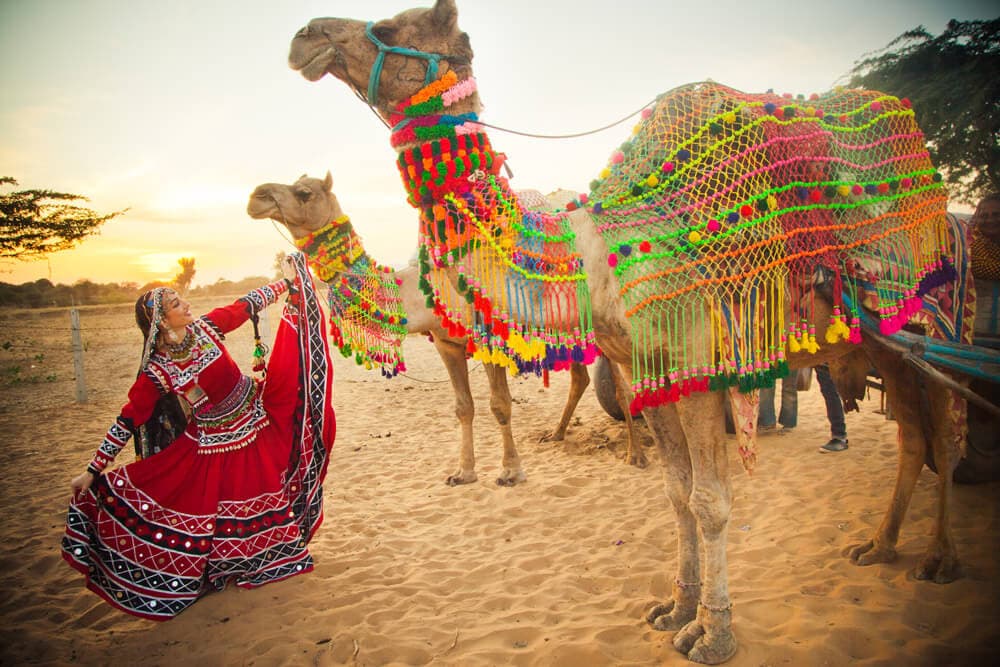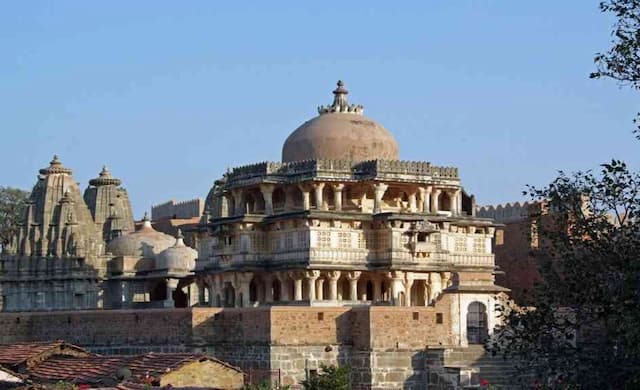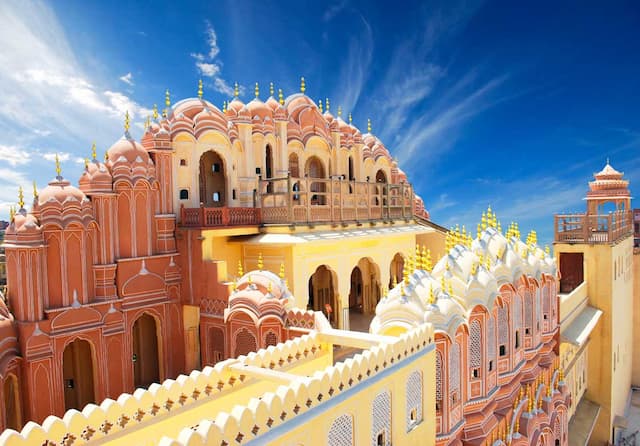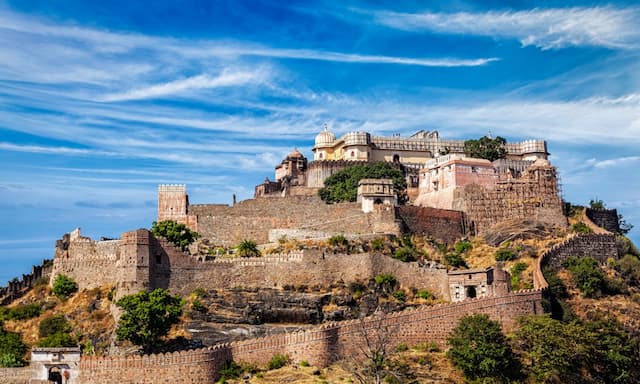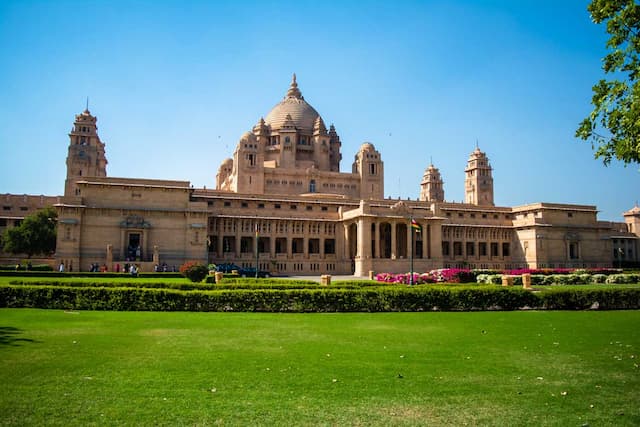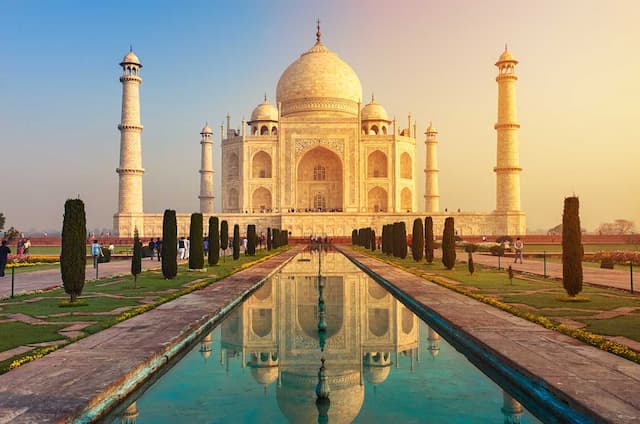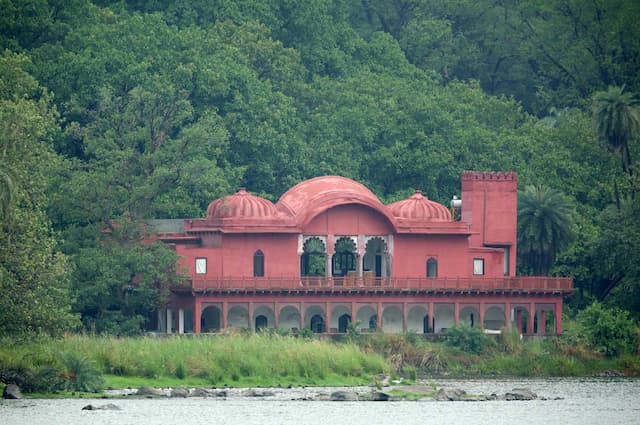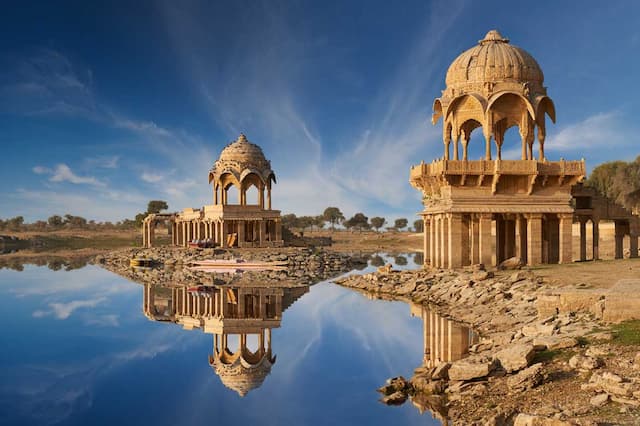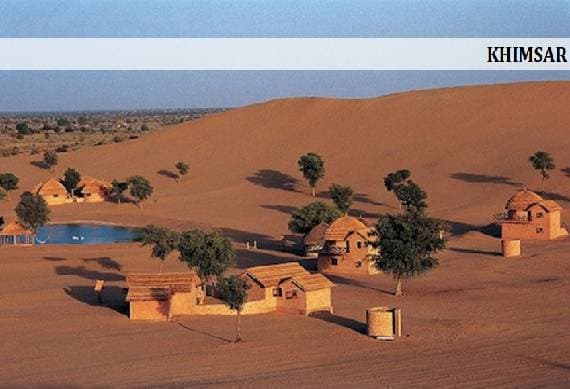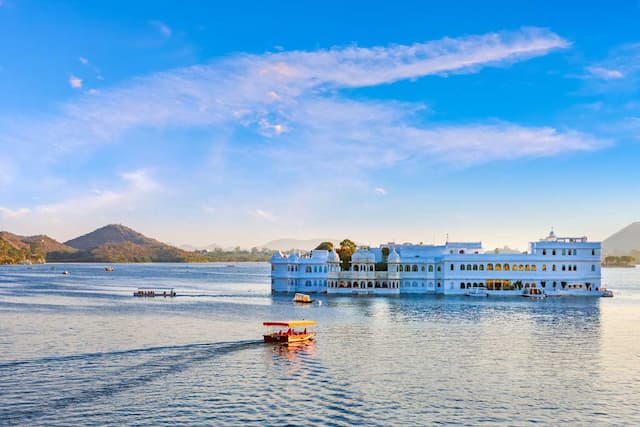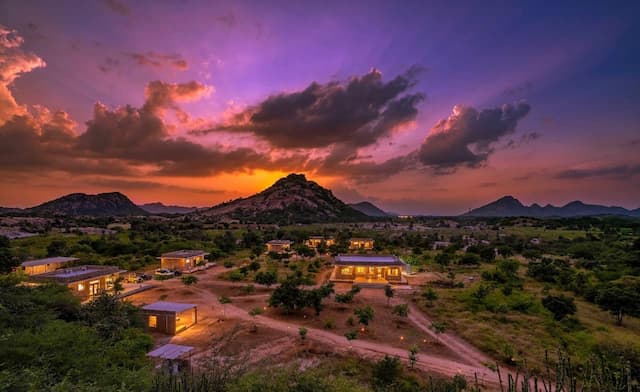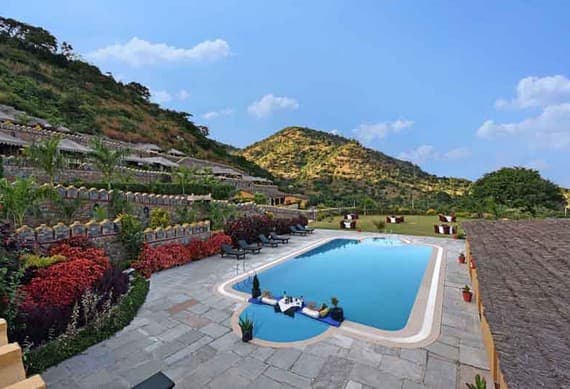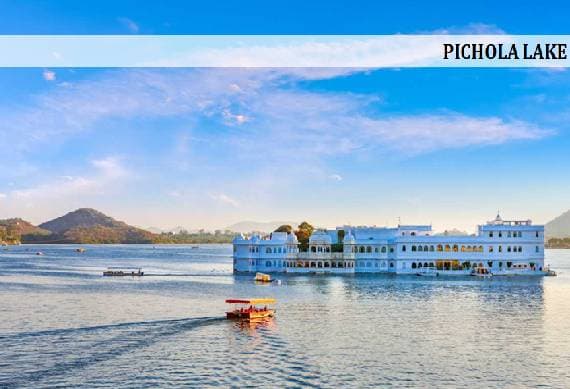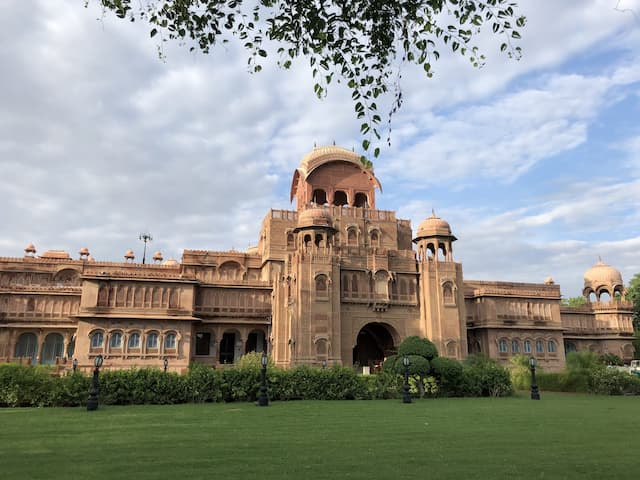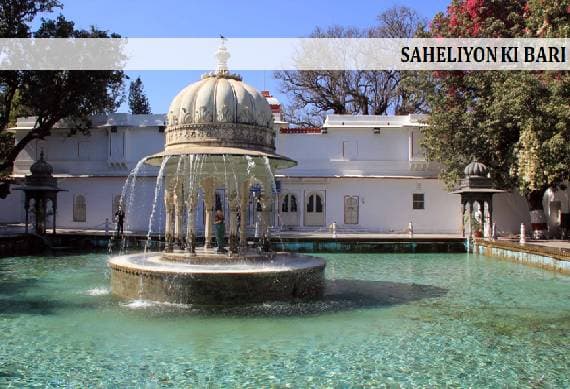History & Culture in Jaipur
Jaipur is one of the most culturally rich legacy urban areas in India. Established in the year 1727, the city is named after Maharaja Jai Singh II who was the fundamental author of this city. He was a Kachhwaha Rajput and governed the zone somewhere in the range of 1699 and 1744.
The Rulers:
Post Sawai Jai Singh time, the city was governed by a few Rajput rulers. Sawai Pratap Singh (1764 - 1803), Sawai Ram Singh II (1835 to 1880), Madho Singh II (1861 - 1922) and Sawai Man Singh II (1911 – 1970) were among the principle rulers who kept the legacy of the city alive.
The city was attacked ordinarily by neighboring warriors, Marathas. In any case, for most of its history, Jaipur remained under the rule of Rajputs. It was one of only parts of the nation which never went under the rule of British, who left India in 1947.
The Architecture:
Jai Singh's previous capital was in Amber, which is 11 kilometers outside Jaipur. He later moved it to Jaipur, because of an expansion in population and shortage of water in Amber. Jaipur has the benefit of being the first totally planned city in India. It has carefully arranged market zones, waterway framework, parks and local areas.
Maharaja Jai Singh managed the development of structures in the city and ensured that they follow the conventional Rajput architectural plan. Different antiquated books and archives were counseled while planning this city. Practically all structures in Jaipur were worked with exceptional sandstone, which is found in wealth in Rajasthan.
Aside from the design, the city is likewise known for its rich logical heritage. Maharaja Jai Singh additionally had a solid tendency towards science and arithmetic. This is the reason; he counseled Vidyadhar Bhattacharya, who was a researcher from Bengal while planning the city. The researcher counseled books on old Ptolemy, stargazing and Euclid to give his master guidance.
The city was based on the head of Indian Architectural science called Shilpa Shastra and took 4 years to fabricate. The city has a world well known planetarium, a wonderful city palace, various temples and social settings.
The Pink City:
Jaipur got the name 'Pink City' in 1853, when the authoritative King Sawai Ram Singh painted all imperial and official buildings in sandstone color to recognize the visit of Prince of Wales to the city. The city is world famous for its remarkable buildings and its dynamic quality is sufficiently depicted by the color.
Jaipur Post Independence:
After India's independence, Jaipur turned into the capital city of the territory of Rajasthan. Despite the fact that, the imperial family despite everything stays in the City Palace, the state is totally run by the common specialists and democratically elected candidates.
Today, Jaipur is one of the most well-known tourist destination in India. A large number of local and global travelers crowd its delightful hotels and palaces to remember its royal past. A large number of the antiquated royal residences have been changed into heritage hotels.
Culture:
Jaipur's cultural legacy has been known far and wide attracting in scores of tourists consistently. Jaipur's rich social heritage is appeared in the shows, customs, lifestyle, workmanship and building of this place. The city is known to be the Pink City of the country on account of the pink shades on the dividers of each architectural building around the city. This sublime city is home of a couple of blue stoneware, bandhani and square artwork, block painting, carving and the traditional dance forms and music has an incredibly exceptional spot in the lifestyle of Jaipur close by the extraordinary food served here. This city observes different fairs and celebrations at an alternate season celebrated by the warm and vivacious individuals living here. It is all worth experience on Jaipur tour.
Top tour packages
History with Adventure Lover Tour
PoloForest (1N) Kumbhalgarh (2N),
Flight Not Included
₹19,540
per person
- Valid upto 31 Mar 2026
Soulful India
New Delhi (1N) Agra (1N), +1 more
Flight Not Included
₹20,690
per person
- Valid upto 31 Mar 2026
Lakes & Forts Of Rajasthan
Udaipur (2N) Kumbhalgarh (2N),
Flight Not Included
₹20,990
per person
- Valid upto 31 Mar 2026
The Golden Rajasthan
Jodhpur (2N) Manvar (1N), +1 more
Flight Not Included
₹29,630
per person
- Valid upto 31 Mar 2026
Golden Triangle
New Delhi (2N) Agra (1N), +1 more
Flight Not Included
₹25,190
per person
- Valid upto 31 Mar 2026
Exotic Rajasthan
Jaipur (2N) Bharatpur (1N), +1 more
Flight Not Included
₹25,520
per person
- Valid upto 31 Mar 2026
Heritage Rajasthan
Jaipur (2N) Bikaner (1N), +2 more
Flight Not Included
₹36,780
per person
- Valid upto 31 Mar 2026
Best Of Rajasthan
Jodhpur (2N) Khimsar (2N), +2 more
Flight Not Included
₹41,330
per person
- Valid upto 31 Mar 2026
Whole of Rajasthan
New Delhi (1N) Agra (1N), +6 more
Flight Not Included
₹60,370
per person
- Valid upto 31 Mar 2026
2N Kumbhalgarh Hotel Tour Package
Kumbhalgarh (2N),
Flight Not Included
₹3,850
per person
- Valid upto 31 Mar 2026
Simplicity Rajasthan
Udaipur (2N) Kumbhalgarh (1N), +1 more
Flight Not Included
₹26,570
per person
- Valid upto 31 Mar 2026
Gems Of Rajasthan
Mount Abu (2N) Pali (1N), +2 more
Flight Not Included
₹32,280
per person
- Valid upto 31 Mar 2026
Golden Heritage
New Delhi (2N) Agra (1N), +3 more
Flight Not Included
₹34,570
per person
- Valid upto 31 Mar 2026
Jewels Of Rajasthan
Udaipur (2N) Narlai (2N),
Flight Not Included
₹56,100
per person
- Valid upto 31 Mar 2026
Happy Travellers
Beautiful Memories with Flamingo Transworld
Dr. Kruti Patel
 Aug
AugA Dream Trip to France and Switzerland with Flamingo
Mr. Dharmesh Shah
 Aug
AugIncredible Europe Tour with Flamingo Transworld
Ms. Jyoti & Mr. Tushar
 Jul
JulWonderful Japan Trip Experience with Flamingo
Surabhi Udeshi
 May
MayUnforgettable Experience With Flamingo Transworld
Mr. Ambrish Shah
 Mar
MarAn Unforgettable Journey with Unnati and Flamingo !
Mr. Navneet Bisani
 Dec
DecWe are Thankful to Flamingo Tours And Travels
Mr. Vijay Shah
 Oct
OctExcellent Experience Southeast Trip With Flamingo Travels
Mr. Manoj Betai
 Jun
JunWonderful Trip with Flamingo Travels
Ms. Chetna Ajmera
 Jul
JulSuper Experience with Flamingo Travels
Shailesh Shah
 Jun
JunTrending travel articles

Affordable Bali Trip Under ₹30000 – Flamingo Transworld Budget Itinerary for First-Time Travelers
Summary: Looking for a budget-friendly Bali trip in 2026? This blog shows how you can enjoy a relaxing 5-day Bali Trip under ?30000/- by choosing smart stays, simple food and the right places. Perfect for first-time Indian travellers looking for a budget-friendly Bali holiday. We all have seen tons of pics of temples, Bali Swing, […]

Japan Tour Packages from India Under ₹3 Lakh – Explore Japan on a Budget
Summary: Your dream of exploring Japan is possible, even with a strict budget! This blog shares how Japan tour packages from India under ?3 lakh are possible. It covers real costs, budget tips, the best time to visit, and much more. It helps you understand how to save money and still enjoy a great Japan […]
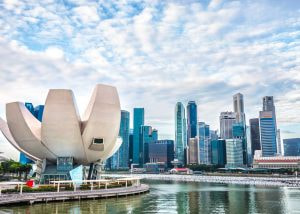
Singapore Tour Packages from India Under ₹1 Lakh – Budget-Friendly Trips 2025-26
Summary: A trip to Singapore can fit your budget with the right plan. This blog explains how Singapore tour packages from India under ?1 lakh work, what costs to expect, and how to save money. It helps you understand the best places to visit in Singapore in 2026 so you can enjoy this island country […]
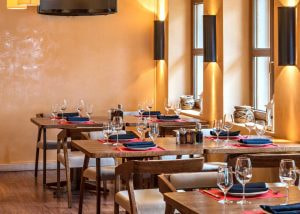
Top Indian Restaurants in Hanoi to Try in 2026!
Summary: Indian restaurants in Hanoi are more than just places to eat. They serve Indian food with a Vietnamese welcome. Whether you are a vegetarian, prefer halal food, or just miss home-style dal, these restaurants have it all. Every meal is served with care and a friendly smile, making you feel right at home in […]

Macau – A city that refuses to sleep , and wont let you either !
Summary: Macau Travel – Macau is a city that never slows down—filled with luxury hotels, thrilling attractions, endless nightlife, and unforgettable energy. From staying at The Venetian to breathtaking Macau Tower views and vibrant casinos, Muskan Golecha’s experience captures the true spirit of a city that you don’t just visit, you live! Macau is one […]

10 Days Itinerary for Switzerland – Perfect Trip Plan for First-Time Visitors!
Summary: If you want a calm, scenic, and well-paced trip, this 10 days itinerary for Switzerland is made for you. It suits families, honeymooners, seniors, and solo travellers. This plan combines top attractions with relaxed, easy travel days. It also keeps Indian comfort in mind. Read on to get the full day-by-day plan, smart tips, […]

Switzerland in Winter 2026: A Fairytale Experience of Snow, Alps & Christmas Markets!
Summary: Switzerland in winter 2026 is pure magic, snow-dusted Alps, glittering Christmas markets, and cozy wooden chalets bring fairytales to life. Whether you are sipping hot chocolate by the beautiful Swiss lakes or exploring the festive streets of cities, it feels like a movie. Perfect for Indian travellers, families, and honeymooners. This blog helps you […]

Christmas in Dubai 2025: Lights, Luxury & Festive Shopping!
Summary: Experience the magic of Christmas in Dubai 2025, where the city sparkles with lights, music, and festive cheer. From grand events to lively markets and fireworks, every corner feels joyful. Enjoy delicious food, family fun, and exciting shopping deals during the Dubai festive season. Plan your trip easily with Dubai Tour Packages and make […]

Bhutan In December 2025- Weather, Insider Tips, Best Time to Visit, and Things to Do!
Summary: Experience the magic of a trip to Bhutan in December 2025, with clear skies, vibrant festivals, fewer crowds, and stunning mountain views. This blog guides you through weather updates, travel tips, places to visit, and must-try experiences for your perfect Bhutan holiday. Plan your relaxing, crowd-free visit to Bhutan and experience the authentic charm […]
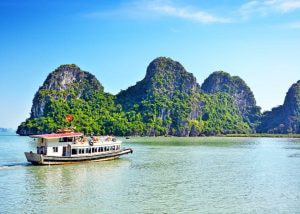
How to Plan A Budget Trip To Vietnam Under ₹60,000!
Summary: Trip To Vietnam Under ?60000 – Dreaming of travelling to Vietnam without stretching your wallet? This blog shares how to plan your trip to Vietnam under ?60,000. It shares everything, including flights, hotels, meals, and activities. Discover must-visit cities, real cost breakdown, and much more to make your Vietnam tour package memorable yet budget-friendly. […]
